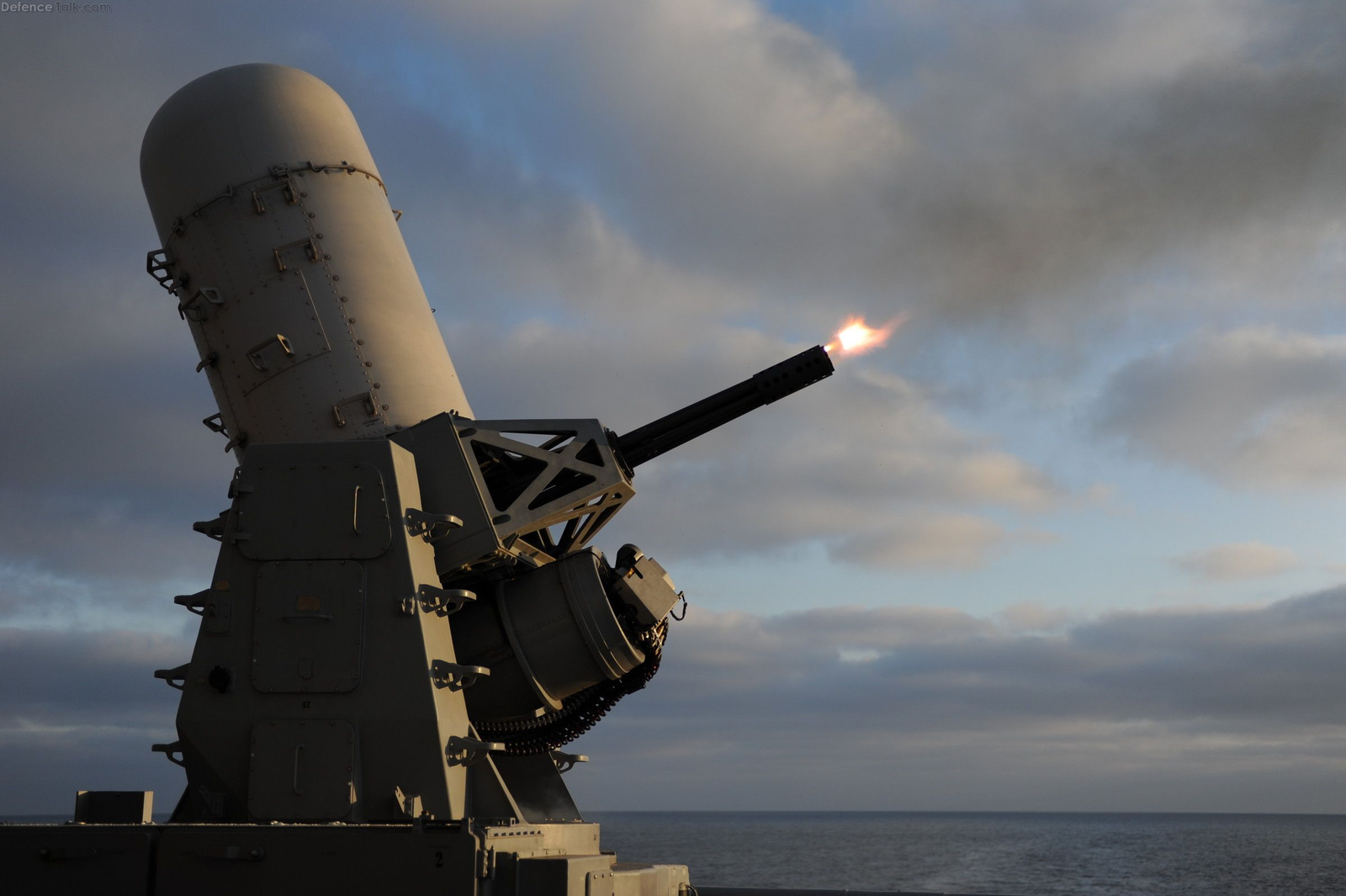
Where defending a warship against dangers that have a tendency to materialize in the fraction of time it takes to blink—be it sea-skimming missiles, high-speed attack craft, or even incoming artillery—there is no better defense than the Phalanx Close-In Weapon System (CIWS). This computerized, radar-directed Gatling gun has become a ubiquitous sight on U.S. Navy ships and those of over two dozen allied countries, the last line of defense between a ship and disaster.

The Phalanx began in the 1960s and 1970s, when the advent of the anti-ship missile changed naval strategy. They were lower-flying and faster than regular aircraft and could be launched by even moderately equipped foes. Suddenly, one missile could bring a billion-dollar ship into harm’s way. The Navy responded with a two-pronged solution: to modify in-service missile defenses and to develop a rate-of-fire gun system that was capable of detecting, tracking, and destroying close-in threats autonomously. This project gave birth to the Phalanx CIWS based on the M61A1 Vulcan 20mm rotary cannon, with a rate of fire of up to 4,500 rounds per minute.

What’s so remarkable about the Phalanx is its high degree of automation and integration. It combines search and track radars, advanced fire-control computers, and the Vulcan six-barreled gun into one compact package. Turn it on, and it can detect, track, and destroy threats on its own, serving functions that previously required multiple systems and a whole team of operators.

The gun itself isn’t your average gun. The M61A1 Vulcan, electrically powered, uses six rotating barrels to achieve a hot rate of fire needed to engage fast-moving targets like missiles or mortar shells. Its construction manages heat and wear effectively by spreading the firing load across multiple barrels for short, high-intensity bursts without overheating. The rounds are stored in a drum under the gun, and the system can fire sea-going armor-piercing rounds of tungsten or self-destructing rounds in its land C-RAM (Counter-Rocket, Artillery, Mortar) configuration, reducing collateral damage.

The Phalanx has seen several upgrades since its first installation on the USS Coral Sea in 1980. The initial Block 0 was supplemented by Block 1, which enhanced radar sensitivity, added more ammo capacity, and enhanced fire rates. Block 1A introduced enhanced processing, allowing the system to manage multiple threats at once.

The most dramatic advance was Block 1B, with the addition of a forward-looking infrared sensor and operator control stations for visual target identification. This made it possible for the Phalanx to defend missiles, helicopters, small boats, and unmanned aerial vehicles, as well as being a multi-mission, flexible platform.

The Phalanx has been proven effective in combat. During the Gulf War, it successfully intercepted several incoming missiles. Ground-based, the C-RAM model has protected bases from rockets and mortars, intercept rates reaching as high as 70–80 percent in some cases. Its ability to find and respond to threats within seconds has saved thousands of lives and valuable equipment.

Integration is yet another significant advantage. The Phalanx may be operated independently or as part of an integrated ship combat system, with the sharing of sensor data and even coordination with other weapons like the Rolling Airframe Missile. The multilayered defense is required for the modern battlefield, for no single system can be effective against all threat systems. While new technology like directed energy weapons will probably revolutionize the battlefield, the Phalanx, as a rapid-response, last-resort defense, cannot be replaced.

There are, of course, limits to its use. Its effective range is fairly short, so it is very much an ultimate last resort. Ammunition consumption is high when it is used, and maintenance has historically been the recipient of close attention in order to keep availability rates high. But its small, self-contained nature allows deck space needs to remain low and installation uncomplicated, a huge reason for its long-term popularity.

Cost is another reason for the Phalanx’s long life. Even with rising costs over time, the system remains significantly more cost-effective per encounter than guided missiles. A standard engagement takes around 300 rounds at around $8,000—a small fraction of the cost of even the cheapest air-to-air missile, and sufficient for all but the most tenacious of threats.

As missile technology continues to advance and hostile forces evolve new tactics, the Phalanx CIWS continues to be an essential component. Automation, firepower, and flexibility all combined ensure that, as new defenses are created, the Phalanx will stand as a faithful sentry to the fleet—a solid reminder of the ongoing balance of offense and defense at sea.
